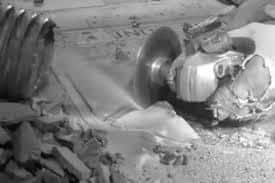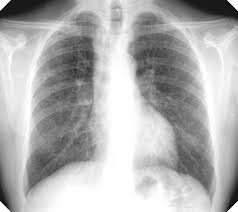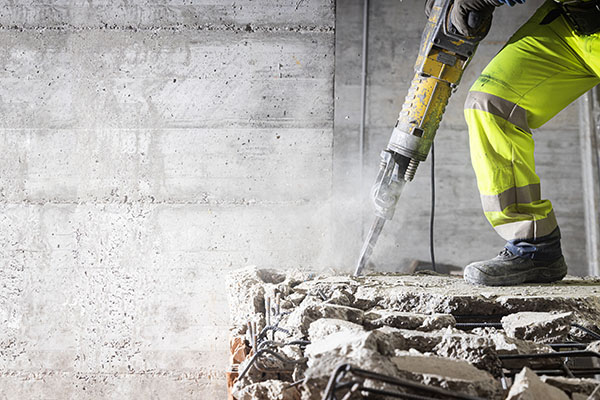The early 1930s Hawk’s Nest Tunnel disaster in Gauley Bridge, West Virginia is considered one of the greatest industrial tragedies in American history. While the exact number of workers who perished due to working on this project is not known, estimates put the death toll over 1000. The culprit? Crystalline silica.
Silica is ubiquitous. It is a major component of the earth’s crust and is found in nearly every form of rock. If you have ever walked on beach sand, you were walking on silica. But just being near silica containing material is not hazardous. The danger comes from inhaling respirable crystalline silica – very tiny particles, many times smaller than the typical sand grains found on beaches and playgrounds. These tiny particles can embed deep in the lung, and are generated from activities such as:
- cutting or sawing stone, brick, or concrete;

- using sand in abrasive blasting;
- grinding or drilling into silica containing materials; and,
- manufacturing bricks, concrete blocks, and ceramic products.

Lung disease caused by the inhalation of crystalline silica dust can be traced back to the ancient Greeks and Romans. In the mid-16th century, German mineralogist Georgius Agricola noted lung problems in mine workers. In the early 18th century, Italian physician and father of occupational medicine Bernardino Ramazzini observed sand-like substances in the lungs of stone cutters on post-mortem inspection. While the dangers of crystalline silica have been known for centuries, it wasn’t until 1971 that Fed/OSHA released its first guidance on permissible exposure limits (PELs) for it.
The most common disease linked to crystalline silica exposure is silicosis. Silicosis is an incurable, progressive, often fatal lung disease caused by inflammatory fibrotic scarring of lung tissue. Typically, silicosis occurs after 10 or more years of chronic exposure, but high-level short-term exposure can cause the disease as well. Many of the workers at the Hawk’s Nest Tunnel site died after only two months of exposure to high levels of crystalline silica. Other diseases linked to silica exposure include chronic obstructive pulmonary disease (COPD), tuberculosis, chronic kidney disease (CKD), and a host of auto-immune disorders. It has also been classified as a human lung carcinogen.
Fed/OSHA’s new enforcement guidelines on respirable crystalline silica, the first update in over 40 years, came about due to more recent data and research regarding the dangers of breathing silica dust, both in the occupational and non-occupational setting. The new rule, effective June 23, 2016, has two standards – one for the construction industry, and the other for general industry and maritime. Full enforcement was implemented on September 23, 2017 for the construction industry, and enforcement began on June 23, 2018 for general industry and maritime. Cal/OSHA fully adopted the new federal rule, so all California industry and businesses that engage in activities that have the potential to generate crystalline silica must comply with the new regulations.
The new Cal/OSHA guidance consists of four key components:
- reduced exposure limit (PEL)
- exposure control plan development
- use of engineering controls
- medical surveillance
Under the new rule, the permissible exposure limit (PEL) has been reduced to 50 ug/m3 (micrograms/cubic meter) averaged over an 8-hour work shift. This new limit is two times lower than the previous standard of 100 ug/m3 for general industry, and five times lower than the previous 250 ug/m3 standard for construction activities.
In addition to a lowered PEL, employers that have silica exposure issues are now required to develop a written exposure control plan and implement appropriate engineering controls. The exposure control plan should limit access to high exposure areas, and include education and training on crystalline silica exposure risks and safety practices. Engineering controls include use of water, dust filters, and ventilation to keep silica levels low. Personal protective equipment, such as respirators, should be used if engineering controls do not provide adequate protection. Using compressed air or dry-sweeping silica residues is prohibited.
Also under the new standard, medical surveillance is required for all workers considered exposed to crystalline silica over an Action Level of 25 ug/m3 or more per 8-hour day. Medical surveillance includes medical exams, lung function testing, chest x-rays, and strict record keeping.
As with any hazardous material, strict adherence to established safety regulations and proper training, as well as appropriate use of engineering controls and personal protective equipment, can prevent illness from exposure to crystalline silica.
Are you in compliance? If not, and you need assistance coming up to speed on the new Cal/OSHA guidelines, including air monitoring or development of a silica control plan, or if you have any questions or concerns about crystalline silica, please contact Gold Health and Safety. We will be happy to assist you!







1 Comment
Thanks for this information about crystalline silica and its regulations. It definitely sounds like other states should follow CA’s example. Hard to imagine what company or industry could safely use and handle crystalline silica outside of these rules and guidelines. https://rockymountainurgentcare.com/occupational-medicine/